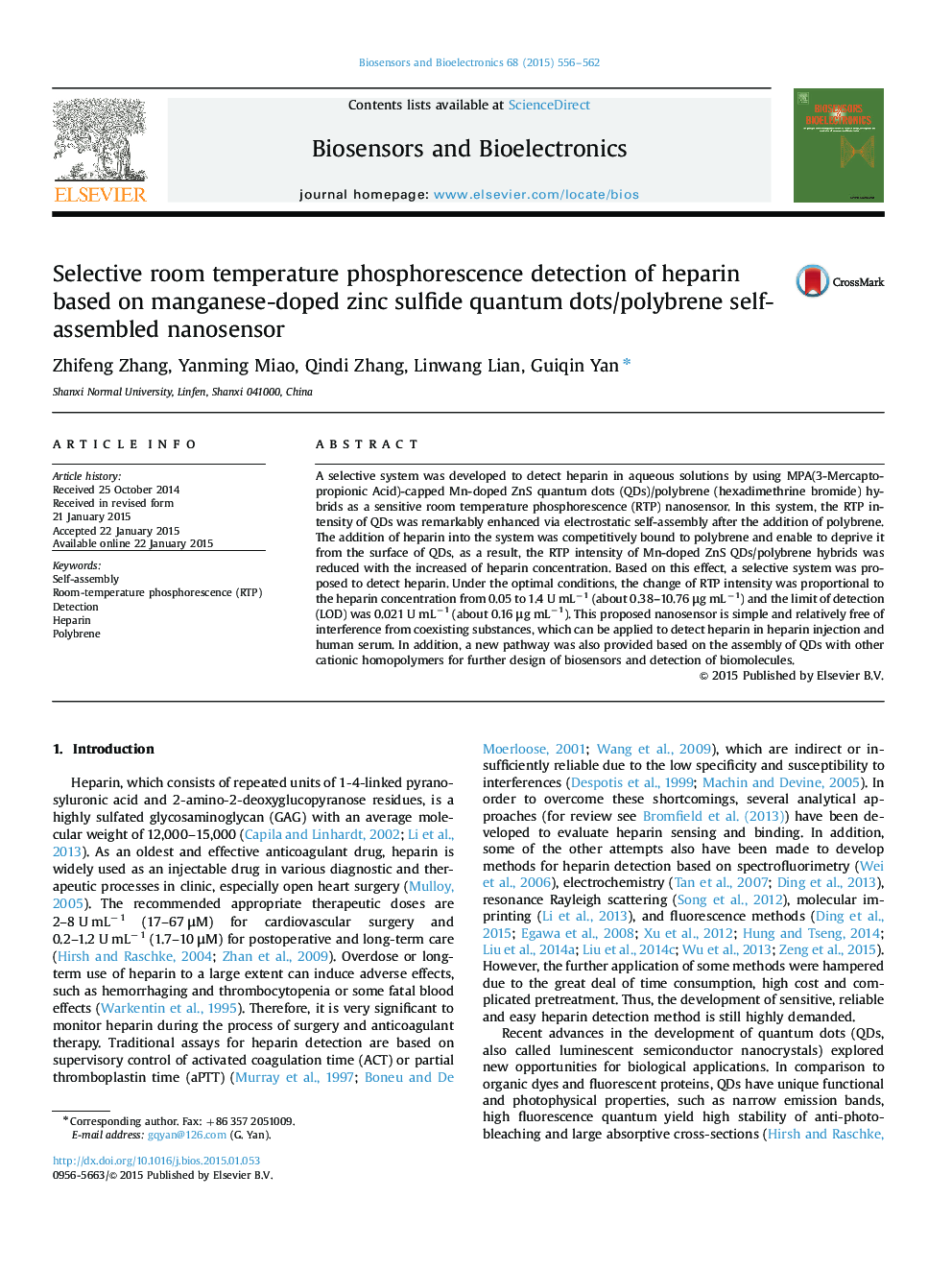| کد مقاله | کد نشریه | سال انتشار | مقاله انگلیسی | نسخه تمام متن |
|---|---|---|---|---|
| 7232664 | 1644974 | 2015 | 7 صفحه PDF | دانلود رایگان |
عنوان انگلیسی مقاله ISI
Selective room temperature phosphorescence detection of heparin based on manganese-doped zinc sulfide quantum dots/polybrene self-assembled nanosensor
ترجمه فارسی عنوان
تشخیص فسفرسنای دمای اتاق انتخابی از هپارین بر اساس نقطه کوانتومی روی سولفید روی منگنز / پالس برن نانوسنسور خودآموز
دانلود مقاله + سفارش ترجمه
دانلود مقاله ISI انگلیسی
رایگان برای ایرانیان
کلمات کلیدی
موضوعات مرتبط
مهندسی و علوم پایه
شیمی
شیمی آنالیزی یا شیمی تجزیه
چکیده انگلیسی
A selective system was developed to detect heparin in aqueous solutions by using MPA(3-Mercaptopropionic Acid)-capped Mn-doped ZnS quantum dots (QDs)/polybrene (hexadimethrine bromide) hybrids as a sensitive room temperature phosphorescence (RTP) nanosensor. In this system, the RTP intensity of QDs was remarkably enhanced via electrostatic self-assembly after the addition of polybrene. The addition of heparin into the system was competitively bound to polybrene and enable to deprive it from the surface of QDs, as a result, the RTP intensity of Mn-doped ZnS QDs/polybrene hybrids was reduced with the increased of heparin concentration. Based on this effect, a selective system was proposed to detect heparin. Under the optimal conditions, the change of RTP intensity was proportional to the heparin concentration from 0.05 to 1.4 U mLâ1 (about 0.38-10.76 μg mLâ1) and the limit of detection (LOD) was 0.021 U mLâ1 (about 0.16 μg mLâ1). This proposed nanosensor is simple and relatively free of interference from coexisting substances, which can be applied to detect heparin in heparin injection and human serum. In addition, a new pathway was also provided based on the assembly of QDs with other cationic homopolymers for further design of biosensors and detection of biomolecules.
ناشر
Database: Elsevier - ScienceDirect (ساینس دایرکت)
Journal: Biosensors and Bioelectronics - Volume 68, 15 June 2015, Pages 556-562
Journal: Biosensors and Bioelectronics - Volume 68, 15 June 2015, Pages 556-562
نویسندگان
Zhifeng Zhang, Yanming Miao, Qindi Zhang, Linwang Lian, Guiqin Yan,
